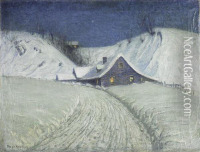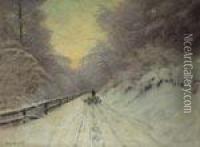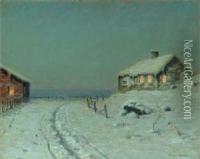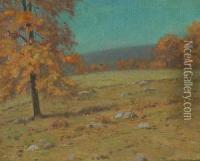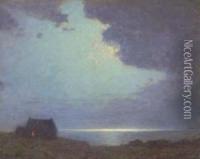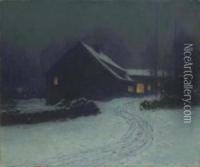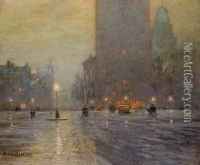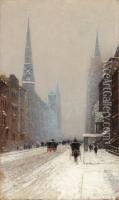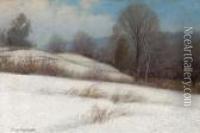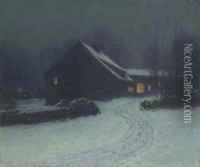Lowell Birge Harrison Paintings
Lowell Birge Harrison was an American genre and landscape painter, teacher, and author who was born on October 28, 1854, in Philadelphia, Pennsylvania. He was part of the Tonalism movement, which emerged in the 1880s as a reaction to the brighter hues of Impressionism, focusing instead on mood and shadow.
Harrison initially studied at the Pennsylvania Academy of the Fine Arts in Philadelphia and then moved to Paris to continue his education. In Paris, he became a pupil of Carolus-Duran and later of Jules Bastien-Lepage, two prominent French artists of the time. During his stay in France, Harrison was influenced by the Barbizon school, which is evident in his later works characterized by a subdued color palette and an emphasis on the effects of light.
After returning to the United States, Harrison became actively involved in the New York art scene. He taught at the Art Students League of New York and later at his own school, the Birge Harrison School of Art. As a teacher, he was highly influential, and his emphasis on the study of light and atmosphere in painting significantly impacted the development of American landscape painting.
Harrison's landscapes often depicted the serene and contemplative nature of rural America, especially during twilight or winter. One of his most famous works, 'Winter in the Valley', exemplifies his skill in capturing the quiet beauty of a winter scene with a limited but effective color range.
In addition to painting and teaching, Harrison authored a book titled 'Landscape Painting', which was published in 1909. The book is considered a valuable resource for understanding the principles of Tonalism and landscape art. It reflects his belief in the importance of harmony, unity, and the subtle gradation of tones in creating a successful landscape painting.
Lowell Birge Harrison's contribution to American art was recognized during his lifetime, and he was a member of various art societies, including the National Academy of Design. He continued to paint and teach until his death on December 13, 1929, in Woodstock, New York, leaving behind a legacy that has inspired generations of landscape artists.

